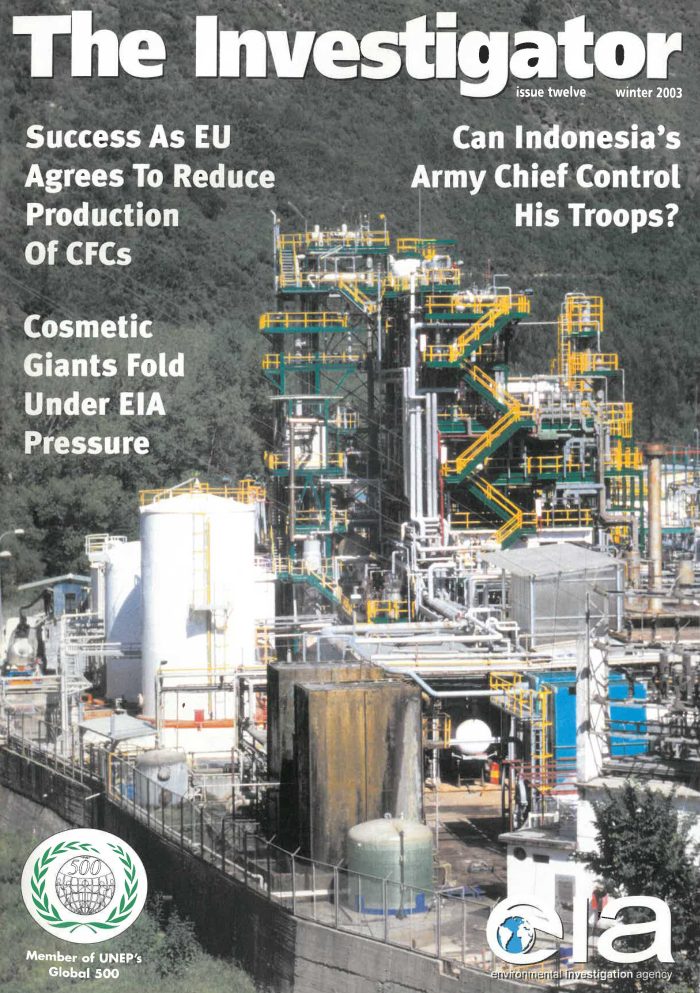EIA at 40 – fighting against the illegal trade in ozone-depleting substances in the EU



In the countdown to EIA’s 40th anniversary later this year, we are featuring previous editions of our newsletter, highlighting our work exposing environmental crime and abuse.
 Today, we share an edition from 2003 detailing our campaign to close down the production of ozone-destroying chlorofluorocarbons (CFCs) in the EU.
Today, we share an edition from 2003 detailing our campaign to close down the production of ozone-destroying chlorofluorocarbons (CFCs) in the EU.
Despite the terms of the global agreement effectively halting CFC production in industrialised countries since the mid-1990s, chemical companies were able to exploit a loophole allowing continued production for export to developing countries.
Four EU countries – Italy, Spain, Greece and the Netherlands – were still manufactured CFCs at the time, contributing to about 27,000 tonnes of the ozone-depleting substances in 2000.
Our investigations showed that European-produced material was being diverted onto the black market after passing through the hands of trade brokers or was being shipped through various intermediate countries. The continued production of CFCs was, we felt, hampering the uptake of ozone-friendly alternative chemicals round the world.
We pushed the EU authorities and Member State governments to put pressure on chemical producers in European countries to close down the production of CFCs.
As part of our argument, we used our evidence showing that some of the EU-produced CFC chemicals were being illegally traded.
At the July preparatory meeting of the Montreal Protocol (the international agreement controlling the use of ozone-depleting substances), the European Union announced the cessation of production of CFCs in Italy and the Netherlands. Other Member States also committed to reduce CFC production.